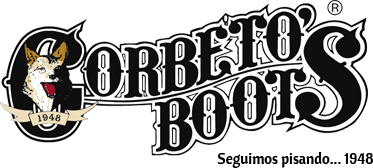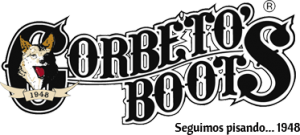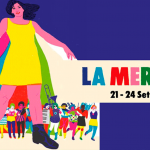On November 1st, in Spain we celebrate All Saint’s Day and in Catalonia for example, the night before is celebrating the “Castanyada”. They are all traditions very rooted in our popular custom and that bit to bit, share their space with other that, a priori seem foreign, like Halloween. But in fact all somehow share the same essence, to make death presence more tolerable.
Along all cultures, exist many ways to share the fear to death. But there is no doubt that one of the most spectacular is the Mexican Day of the Dead.
The Day of the Dead: An ancient tradition
There are records from the mexica, mayas, purepecha and totonaca that they already celebrated rituals dedicated to their ancestor’s memory before spanish arrived to America.
The festival that later on would turn into Day of the Dead as we know took place in the ninth month of mexica’ solar calendar, approximately during our month of august, and lasted almost a whole month. The festivities were chaired by Mictecacíhuatl Goddes , known as “Lady of the Dead”, God Mictlantecuhtli’s wife, Lord of Dead’s land.
With the arrival of spanish and their own traditions, when converted the native, a syncretism that joined catholical tradition of All Saints Day and Middle American rituals happened. Arising the actual Day of the Dead.
Day of the Dead nowadays
In 2003, in a ceremony that took place in Paris, the UNESCO distinguished Day of the Dead festivity as Masterpiece from the Oral and Intangible World Heritage by being “one of the most relevant representations of Mexican and worldwide live heritage, and one the most ancient and important cultural expressions from countrie’s native groups”.
Nowadays, it is mainly celebrated between november 1st and 2nd, and coincides with catholic All Saints Day celebration, although in several mexican regions , the festivities to honor the dead may start some days before.
Evidently, it is a very celebrated festivity in Mexico, but also in some Central America countries and some US comunities with large mexican population.
In these days, there are two main celebration elements: the dead’s offering altar and the famous catrinas.
Day of the Dead altars
During Day of the Dead’s night, dead’ soul are permited to roam on the land. The way to honor and let them visit their loved ones is by the traditional altars. Those altars are made by levels. Two, three or seven, that represents the different existence stratum. All those steps must be lined with black or white cloth.
Offerings are placed in the altars and different elements invite dead’ souls to visit his/her loved ones. Among the most common elements we can find:
- Sweet skulls with dead’s name written on the front.
- Dead’s bread, a sweet roll with diverse shapes, from round to even skulls or bones.
- Dead’s portrait, back towards with a mirror in the front. So he/she can see his/her relatives and those can only see the deceased.
- Purgatory souls image, to ask deceased one’ soul exit of Purgatory.
- Twelve purple altar candles (may be less but always an even number) and wax flowers, as duel sign.
- A salt cross, ash, soil or lime at altar’s top, close to decesased portrait. To remeber his/her faith.
- Candied pumpkin, a brown sugar sweet .
- China paper with skeletons and little skulls.
- A tejocote stick for soul’s to make way for visiting their relatives.
- An incense copal, prehispanic element that cleans and purifies the energies.
- Canddles, the light guides the dead to alive’s world. Preferentially purple or white.
- Water, one of the most important elements that reflects soul’s purity and life’s cycle.
- Food and beverage, placing dead’s favourite meals and drinks.
The famous catrinas
At the end of 19th Century beginnings of 20th, in Mexico, skeletons and skulls images were the common denounce way and for social criticism. Among those combative cartoonists, stand out José Guadalupe Posada with his “Calavera Garbancera”. In that time, “garbancero” was an insult related to the poor people with native blood that wanted to feign spanish, repudiating their own race, heritage and culture.
Later on, Diego Rivera took his design of a sad skull with hat and added a stole of feathers naming it catrina, the name that would make it universal. Catrina is referred to te word “catrín”, the typical elegant and primp dandy.
With the time, the catrina has evolved, becoming the mexican image for the death.
The Day of the Dead in Barcelona
Mexican communities spreaded around the world have made The Day of the Dead an international celebration, and in Barcelona, we also have the chance to experience this special festivity. At Corbeto’s Boots we love it and we won’t miss it. Check out here some activities that will take place during these days:
- On October 31st at 19:00 horas Casa Mèxic organizes a the lecture of Los grandes muertos, a work of the mexican author Luísa Josefina Hernández that coincides with her 90th anniversary. At 19:45 the great altar will be inaugurated, this year will be dedicated to the soprano Montserrat Caballé. And at 20:00 Mictlán will be inaugurated, an exhibition about the Day of the Dead by Colectivo Vórtice, directly brought from Mexico with the participation of 50 mexican artists. Furthermoe, typical Dead of the Dead food and drinks will be served.
- Also on October 31st, Taula per Mèxic organizes a great party starting at 18:00. The celebration will end with Susurros del México olvidado
- On saturday November 3rd Mexcat organizes all kind of activities at Meeting Point Creu Coberta, from noon to 21hrs: Coco the movie screening, Paint Coco workshop, Piñata creation workshop, monumental altar, make up workshop, mexican food, handicrafts, dance and artists. Stands out at 16:00 the Catrinas parade at La Bibliomusicineteca (Street Vila i Vilà 72).
After Castanyada and Halloween, give a try to the Day of the Dead. Is something absolutely different and sure you won’t regret. Mind you, if you are doing it, go conveniently dressed wearing one of our sugar skulls patches.
Image fonts: Viajar, National Geographic, Espaciomex













